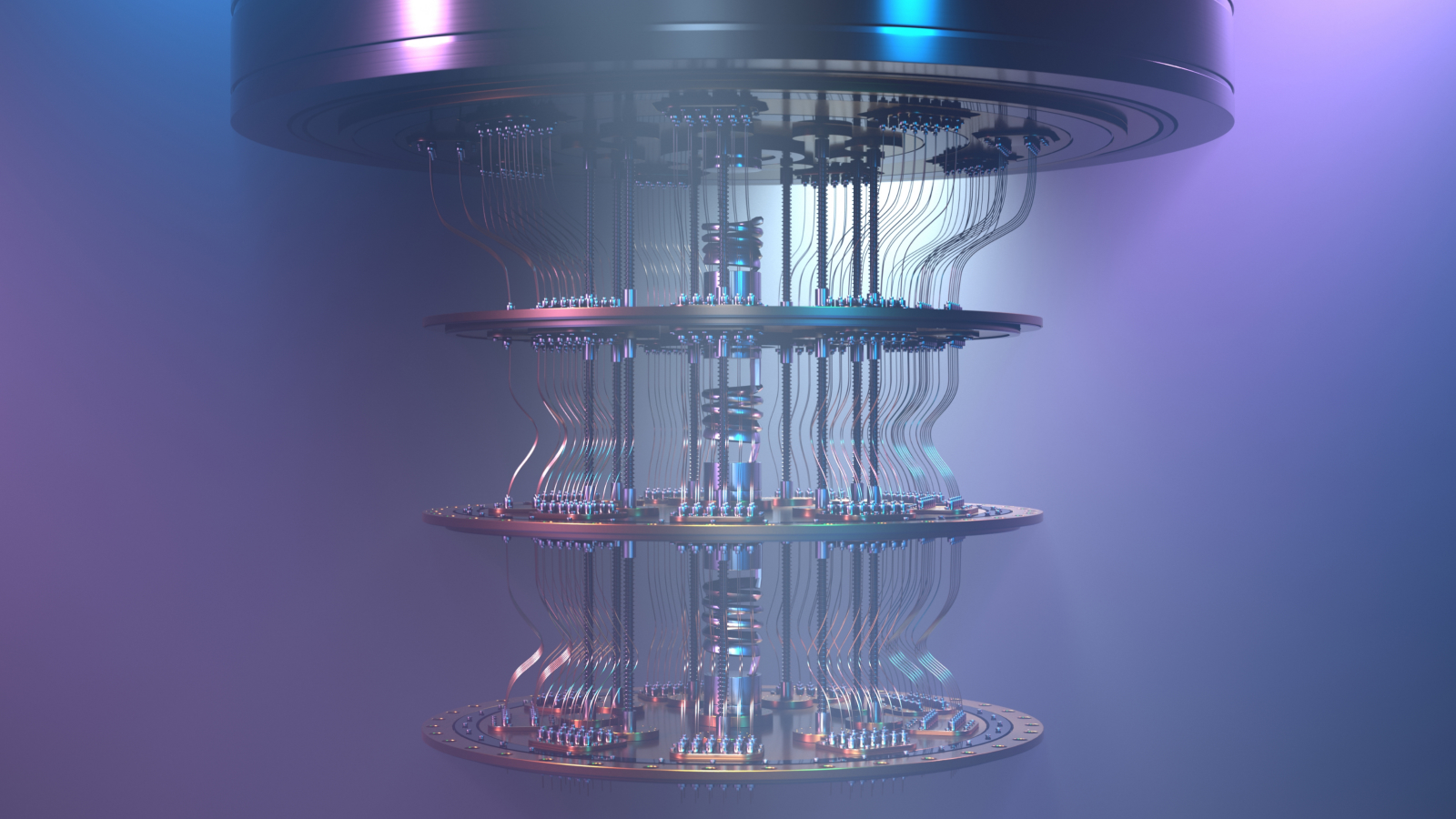Reaching absolute zero for quantum computing now much quicker thanks to breakthrough refrigerator design
Using a more efficient method than current approaches, researchers promise the coldest temperatures in the world at just a fraction of the cost and time.

A breakthrough cooling technology could help invigorate quantum computing and slash costly preparation time in key scientific experiments by weeks.
Scientists often need to generate temperatures close to absolute zero for quantum computing and astronomy, among other uses. Known as the "Big Chill," such temperatures keep the most sensitive electrical instruments free from interference — such as temperature changes. However, the refrigerators used to achieve these temperatures are extremely costly and inefficient.
However, scientists with the National Institute of Standards and Technology (NIST) — a U.S. government agency — have built a new prototype refrigerator that they claim can achieve the Big Chill much more quickly and efficiently.
The researchers published the details of their new machine April 23 in the journal Nature Communications. They claimed using it could save 27 million watts of power per year and reduce global energy consumption by $30 million.
A new breed of refrigerator
Conventional household fridges work through a process of evaporation and condensation, per Live Science. A refrigerant liquid is pushed through a special low-pressure pipe called an "evaporator coil."
As it evaporates, it absorbs heat to cool the inside of the fridge and then passes through a compressor that turns it back into a liquid, raising its temperature as it is radiated through the back of the fridge.
Related: 'World's purest silicon' could lead to 1st million-qubit quantum computing chips
Sign up for the Live Science daily newsletter now
Get the world’s most fascinating discoveries delivered straight to your inbox.
To achieve required temperatures, scientists have used pulse tube refrigerators (PTRs) for more than 40 years. PTRs use helium gas in a similar process but with far better absorption of heat and no moving parts.
While effective, it consumes huge amounts of energy, is expensive to run, and takes a long time. However, the NIST researchers also discovered that PTRs are needlessly inefficient and can be greatly improved to reduce cooling times and lower overall cost.
In the study, the scientists said PTRs "suffer from major inefficiencies" such as being optimized "for performance only at their base temperature" — usually near 4 Kelvin. It means that while cooling down, PTRs run at greatly inefficient levels, they added.
The team found that by adjusting the design of the PTR between the compressor and the refrigerator, helium was used more efficiently. While cooling down, some of it is normally pushed into a relief valve rather than being pushed around the circuit as intended.
Quantum computing at a fraction of the cost
Their proposed redesign includes a valve that contracts as the temperature drops to prevent any helium from being wasted in this way. As a result, the NIST team’s modified PTR achieved the Big Chill 1.7 to 3.5 times faster, the scientists said in their paper.
“In smaller experiments for prototyping quantum circuits where cooldown times are presently comparable to characterization times, dynamic acoustic optimization can substantially increase measurement throughput,” the researchers wrote.
The researchers said in their study that the new method could shave at least a week off experiments at the Cryogenic Underground Observatory for Rare Events (CUORE) — a facility in Italy that’s used to look for rare events such as a currently theoretical form of radioactive decay. As little background noise as possible must be achieved to obtain accurate results from these facilities.
Quantum computers need a similar level of isolation. They use quantum bits, or qubits. Conventional computers store information in bits and encode data with a value of either 1 or 0 and perform calculations in sequence, but qubits occupy a superposition of 1 and 0, thanks to the laws of quantum mechanics, and can be used to process calculations in parallel. Qubits, however, are incredibly sensitive and need to be separated from as much background noise as possible — including the tiny fluctuations of thermal energy.
The researchers said that even more efficient cooling methods could theoretically be achieved in the near future, which could lead to faster innovation in quantum computing space.
The team also said their their technology could alternatively be used to achieve extremely cold temperatures in the same time but at a much lower cost, which could benefit the cryogenics industry, cutting costs for non-time-intensive experiments and industrial applications. The scientists are currently working with an industrial partner to release their improved PTR commercially.
Rory Bathgate is a freelance writer for Live Science and Features and Multimedia Editor at ITPro, overseeing all in-depth content and case studies. Outside of his work for ITPro, Rory is keenly interested in how the tech world intersects with our fight against climate change. This encompasses a focus on the energy transition, particularly renewable energy generation and grid storage as well as advances in electric vehicles and the rapid growth of the electrification market. In his free time, Rory enjoys photography, video editing and science fiction. He joined ITPro in 2022 as a graduate, after completing an MA (Hons) in Eighteenth-Century Studies at King’s College London. You can contact Rory at rory.bathgate@futurenet.com.











